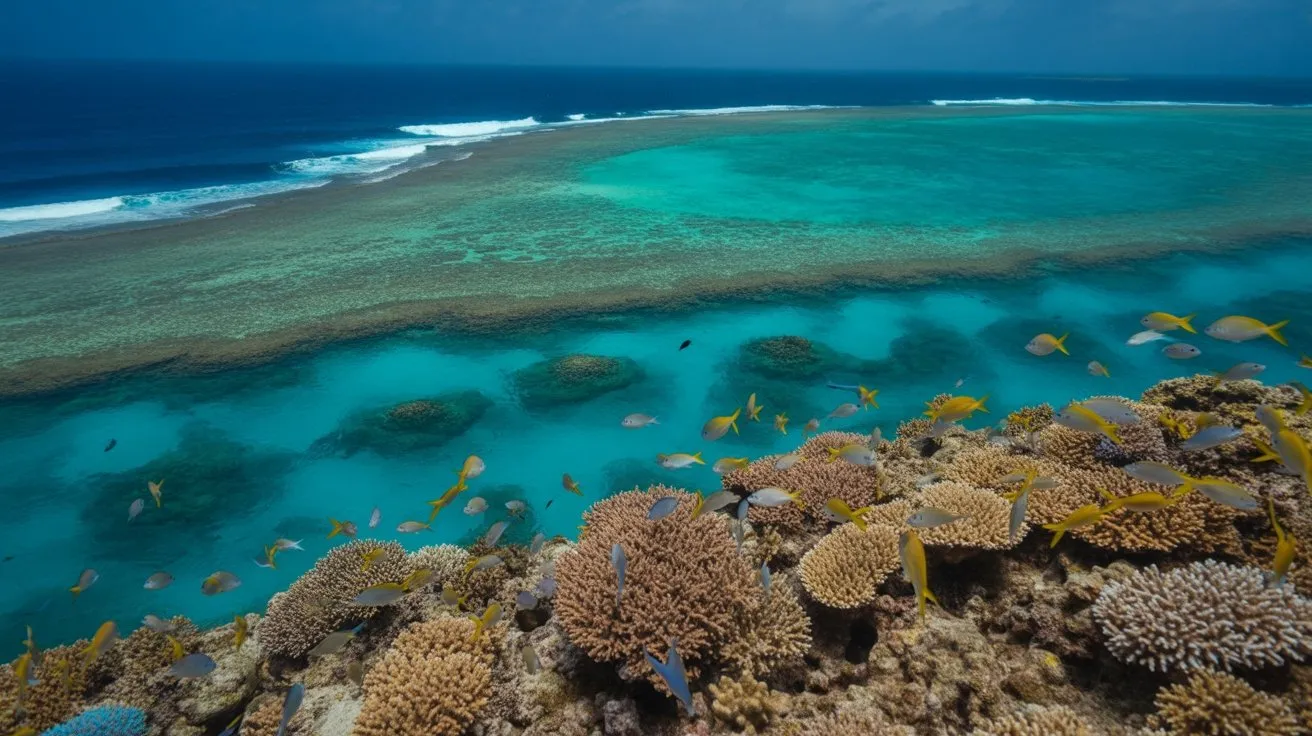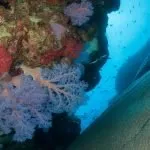You’ve likely never considered that coral reefs form distinct geological zones based on their proximity to landmasses and water depth. Scientists classify these marine ecosystems into three primary categories: fringing reefs that hug coastlines, barrier reefs separated by deep lagoons, and atolls encircling central basins. Each zone exhibits unique structural characteristics, biodiversity patterns, and formation processes that determine their ecological function and vulnerability to environmental stressors.
What Are Coral Reef Zones and How Do They Form?
When examining coral reef ecosystems, you’ll find distinct zones that develop through specific environmental gradients and biological processes. These zones form based on depth, wave energy, light penetration, and sediment distribution patterns.
You’ll observe four primary zonation categories: the reef flat (0-2 meters depth), reef crest (highest wave energy zone), fore reef slope (2-20 meters), and deep fore reef (20+ meters).
Wave action intensity decreases exponentially with depth, creating unique habitat niches. Light availability follows Beer’s Law attenuation, dropping to 10% surface irradiance at 10-meter depth in clear waters.
Carbonate accretion rates vary considerably across zones—reef crests exhibit maximum growth (10-15 mm/year) while deep zones show minimal expansion (1-3 mm/year). Temperature gradients, nutrient availability, and calcium carbonate saturation levels further differentiate these distinct ecological compartments. Additionally, coral reefs are essential for maintaining a healthy ocean environment, providing habitat and protection for diverse marine life.
Fringing Reefs: Coastal Coral Communities
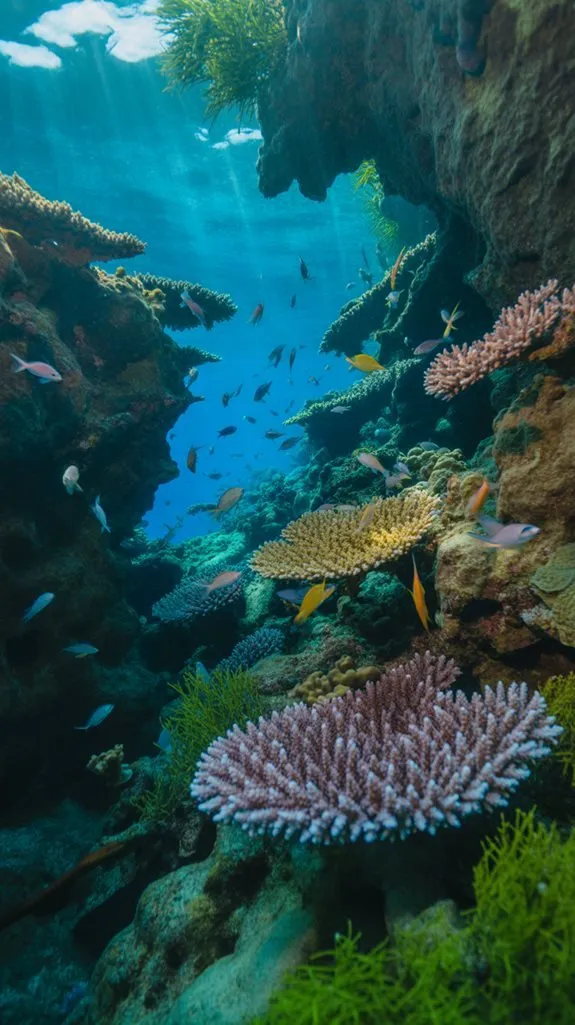
Fringing reefs represent the most common reef type globally, comprising approximately 75% of all coral reef formations and developing directly adjacent to shorelines with minimal lagoon separation.
You’ll find these structures extending 0.5-2.5 kilometers seaward from coastlines, with depths ranging from intertidal zones to 40 meters.
They’re characterized by three distinct zones: the reef flat (shallow platform exposed during low tide), reef crest (highest energy zone with maximum wave action), and fore reef (seaward slope descending into deeper waters).
You can observe fringing reefs in tropical regions where water temperatures exceed 18°C year-round.
They support biodiversity densities of 1,000-3,000 species per square kilometer, making them critical marine ecosystems for coastal protection and fisheries productivity. Moreover, fringing reefs play a vital role in protecting shorelines from erosion and flooding by absorbing wave energy.
Barrier Reefs: The Ocean’s Great Walls
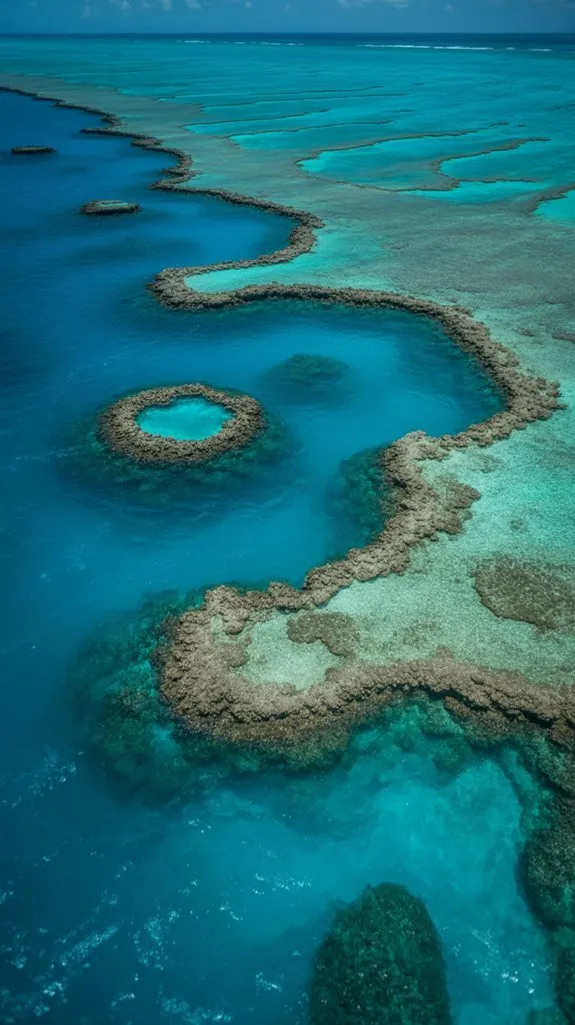
Barrier reefs constitute the second most prevalent reef type, forming massive linear structures that run parallel to coastlines while maintaining significant separation distances of 0.5-100 kilometers offshore.
You’ll find these systems creating deep lagoons between the reef and mainland, with water depths ranging from 10-100 meters. The Great Barrier Reef exemplifies this classification, spanning 2,300 kilometers along Australia’s northeast coast.
You can identify barrier reefs through their distinct zonation patterns: the fore-reef slope faces open ocean with depths exceeding 200 meters, while the back-reef lagoon contains patch reefs and coral heads.
These structures develop over geological timescales through subsidence processes, where landmasses gradually sink while coral growth maintains reef elevation near sea level, creating their characteristic offshore positioning. Coral reefs are vital ecosystems that provide shelter and food sources for various marine life.
Atolls: Ring-Shaped Coral Islands
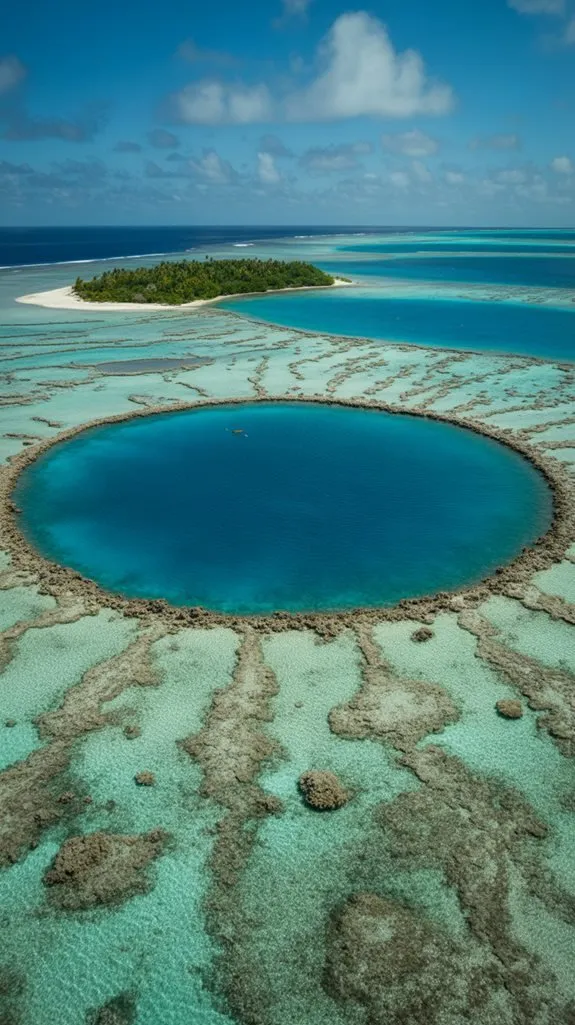
Third among major reef classifications, atolls represent circular or oval-shaped coral formations that encircle central lagoons in deep oceanic waters, typically occurring 50-200 kilometers from the nearest continental landmass.
You’ll find these structures developed through Darwin’s subsidence theory: volcanic islands gradually sink while coral growth maintains reef elevation at sea level. The process creates characteristic morphological zones you can identify systematically.
You’ll observe the outer reef slope descending into abyssal depths exceeding 1,000 meters. The reef flat spans 100-500 meters width, featuring coral rubble and sand deposits.
Central lagoons reach 20-50 meters depth with sparse coral patches called pinnacles. Atolls demonstrate advanced reef development stages, representing thousands of years of continuous coral accretion following volcanic substrate subsidence. Climate change impacts on atolls can lead to significant alterations in their structural integrity and biodiversity.
Ecological Importance and Conservation of Reef Systems
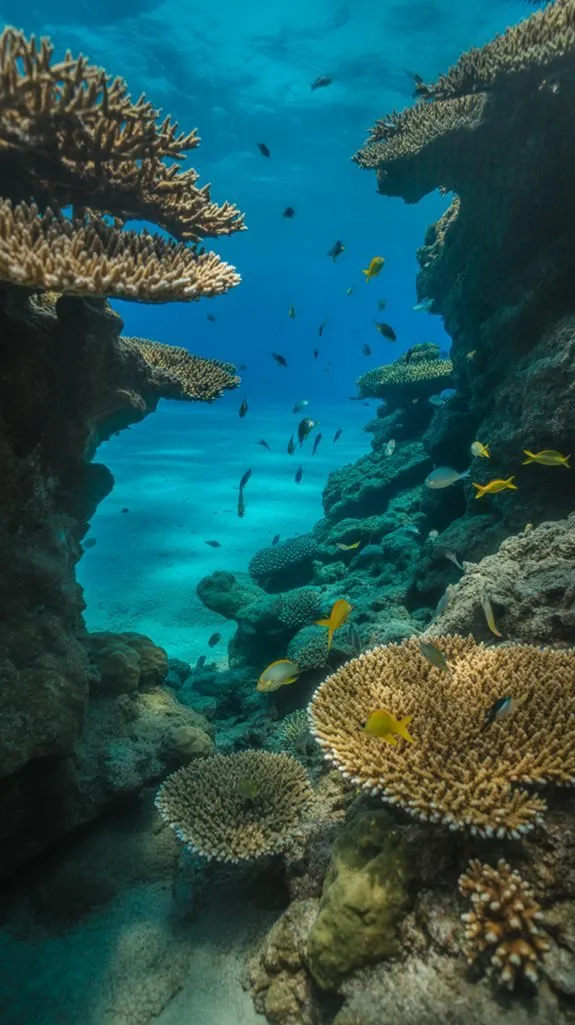
Beyond their remarkable geological formations, coral reef systems function as biodiversity hotspots that support approximately 25% of all marine species within less than 1% of ocean surface area.
You’ll find these ecosystems provide critical services: coastal protection through wave energy dissipation, carbon sequestration via calcification processes, and nursery habitats for commercially important fish species.
However, you’re witnessing unprecedented threats to reef stability. Ocean acidification reduces carbonate ion availability by 30%, compromising skeletal formation.
Thermal stress events trigger mass bleaching when temperatures exceed 1-2°C above maximum monthly means. Additionally, anthropogenic stressors including nutrient pollution, sedimentation, and physical damage accelerate reef degradation.
Conservation strategies you should implement include marine protected areas, water quality management, and assisted evolution techniques to enhance coral thermal tolerance and genetic diversity. Establishing marine protected areas is essential for safeguarding these ecosystems against human-induced threats and promoting recovery.
Conclusion
You’ve analyzed the systematic classification of coral reef zones—fringing, barrier, and atoll formations—each representing distinct morphological stages in reef development. But here’s what the data doesn’t reveal: these ecosystems are disappearing at unprecedented rates. Your understanding of reef zonation patterns becomes critical as ocean acidification increases by 0.1 pH units per decade. Will you apply this taxonomical knowledge before these complex carbonate structures reach their thermal tolerance thresholds? Time’s running out.
